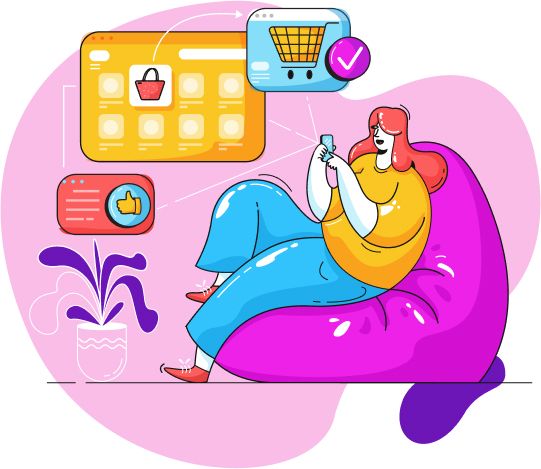7 Brilliant Ways to Increase Sales Volume


Selling is a numbers game, in more ways than one.
While revenue is undoubtedly — and understandably — the main focal point when it comes to analyzing sales performances and improving sales processes, another key aspect companies must consider is which products are bringing it that revenue.
In other words, they need to look at their sales volume.
Sales volume is a numerical representation of your company’s sales broken down by product type over a specific time period. Sales volume does not take into account the revenue generated from a product, but simply shows you how many of each product were sold during a given period.
Sales volume is especially crucial for organizations that offer multiple products and have large, diversified product lines. Keeping an active track of your sales volume helps you identify which products are selling and which aren’t, which sales reps are performing well and who are slacking, whether some products might need to be shelved, and whether some other products might need more focused efforts to boost their sales numbers.
There are a myriad of strategies to increase sales volume. Having said that, we’ve jotted down seven proven ways we think are a great place to start.
Cross-selling and upselling are two sales techniques that are so easy to implement yet so incredibly powerful they will never go out of style.
Cross-selling is when you encourage a customer who has shown keen interest in buying your product to make one or two additional purchases, usually of lesser value. Classic examples include: ‘Would you like some fries with that burger, ma’am?’ or ‘How about a nice red tie or a pair of pants to go with that shirt, sir?’
Upselling, on the other hand, is when you try to persuade a customer to buy a higher priced item (often with better features) than the one they are currently considering. For example, getting an in-store customer who has shortlisted a household appliance like a smart tv or fridge to upgrade to a better, pricier model.
Food delivery apps are a great example of cross-selling and upselling used in perfect tandem. For instance, when ordering a pizza, as soon as you tap the pizza you want, a list of toppings pops up for you to add before confirming the item (upselling). Then, once you’ve selected all the items you want from the menu, you see another smaller list on the checkout screen — this one suggesting two or three items that might go well with your pizza, like garlic bread or a bottle of coke (cross-selling).
Pro-tip 1: Comb through your entire inventory. See which products go well together. Then club them in different combinations and see which ones work best for your business.
Pro-tip 2: Whether using these tactics in-person or online, allow your customers some breathing room before making your move. Let them have a look around first, see what they like, then ease them into it. Don’t bombard them with a hard sell at every turn, or you’ll lose their business … and their trust.

Salespeople work for commissions — plain and simple. Money is not the only motivator for them, of course, but we can safely assume it’s one of the biggest, if not the biggest.
To leverage the monetary drive of your sales team and improve your sales volume, you need to build a sales commission plan and incentivize them accordingly. For example, let’s say you’re a sunglasses retailer and you want to boost sales of a certain brand since the markup is higher on those. One guaranteed way to do this is to offer your sales team a higher commission on the sale of those sunglasses.
This applies to almost any business out there — be it a brick-and-mortar store selling niche footwear, or a multinational SaaS firm with a diverse product portfolio.
Note: We’re not suggesting you completely overhaul your sales compensation plan and start anew (believe us, we know how exhausting and time-consuming preparing those things are). All we’re saying is take a closer look at your current commission structure and see if shuffling some of your commissions around could help achieve your desired sales volume.

Considering we live in an age where data is literally more valuable than oil (and gold, too, for that matter), this one really doesn’t need to be said. Still, we’re not taking any chances.
Collecting data is not that hard anymore. But knowing what data to collect and how to use it to increase sales volume is always tricky. Here are a few pointers to get you started:
Who are your biggest competitors? What sort of pricing models do they have? Which products of theirs are selling well?
If your sales volume of certain products is low, it could be that your competitor offering the same range of products has priced theirs a little more aggressively, or has perhaps added a new feature or two, or is maybe marketing them as a bundled package — something you could just as easily do but haven’t thought of yet.
Who are your top buyers? Are you prioritizing them enough? Or are they being poached by your competitors while you focus on growing your client base?
If ever there was a classic case of a bird in hand being worth two in the bush, your current customers are it. The phrase rings even truer for your top buyers, for they are the ones most likely to buy from you often, and in larger amounts. So identify your top buyers and let them know you care about them and appreciate their loyalty. Make them feel special.

Nothing in life comes free, not even word of mouth.
If you want your products to sell quicker, you need to pay the right people to promote them to the right audience. And that’s where a kickass affiliate programs comes in.
For those not familiar with the term, an affiliate program is where one business offers another business or individual (like an influencer or blogger) a commission for promoting its products and generating sales.
Review sites, coupon sites, email marketers, YouTubers, influencers — the list of affiliates you can choose from today is frankly endless. The most important factor you need to consider when creating your own affiliate program is the platforms where your customers spend the most time. Are they avid consumers of YouTube videos? Or do they prefer reading blogs instead? Also, do they search for new products on search engines, or look for deals and promotions on places like Facebook, Instagram, and Twitter?
Your affiliate program will work as long as you provide your affiliates a clear coupon code or link that ties them to the sale. Of course, you also can’t be stingy with the cuts you offer them, or they will gladly take their business elsewhere. Additionally, you can also use white-label marketing services or do in-house marketing for your company to improve your brand awareness. With this, when a prospect comes to a sales call, they already have heard about your company.

This one is best explained with an example.
Company A is a movie streaming platform that offers subscription-based services to its members. They started off with two plans:
Basic @ $60/year
Number of simultaneous devices: 1
720p max video quality
No downloads
Premium @ $150/year
Number of simultaneous devices: 4
4K max video quality
Unlimited downloads
After six months, Company A found that over 80% of the customers had chosen the Basic plan. Understandably, their investors were not too pleased.
Enter their new VP of Strategy. She suggests introducing a new plan, one that is not meant to attract any customers but instead ‘nudge’ them towards the premium plan. The details of this plan were:
Sub-Premium @ $125/year
- Number of simultaneous devices: 2
1080p max video quality
Max 2 downloads / per month
Six months later, Company A found that over 40% of their customers were now Premium members, while 55% were Basic members, and just 5% were Sub-Premium members. No points for guessing that everyone in the boardroom was all smiles after this.
So how did they do it?
By subtly coercing customers into choosing the Premium plan by making it look a lot more attractive than the Sub-Premium option. Before, there were only two choices: $60 and $150. The difference was too much and the choice too easy for the customer. But with the $125 option, the customer was led to believe — and perhaps not incorrectly so — that they got the most bang for their buck with the Premium plan.
This strategy is called the "decoy effect" or "asymmetric dominance effect." If used sparingly and in the right setting, it can provide just the sales boost you’re looking for.
Sometimes, it could seem like you’re doing everything right. Your marketing campaigns are running flawlessly. The leads are pouring in. And you’ve got a pretty good sales team.
But somehow, the deals are just not closing. And your sales volume is suffering.
At such times, it might be a good idea to delve deeper into your territory design and lead allocation system. If you’re assigning leads arbitrarily or in a predetermined sequential order, it might be time to change that.
The most obvious discrepancies you might come across during such an exercise are that your best leads are not going to your best reps, or that your best people are not being assigned to territories with the most potential. These can be rectified easily — and should.
However, some of the other findings might not only surprise you but prove just as useful. For example, you might notice that one of your primarily Spanish-speaking territories is not being handled by a sales rep who is fluent in Spanish, but by a rep who doesn’t know Spanish at all.
Or you might find out that one of your reps, due to her previous work experience, has excellent relationships with clients in a particular territory, but you’ve been assigning her leads from a different territory.
A sales commission software like ElevateHQ can help you greatly in this regard. By seamlessly integrating with your existing CRM and providing real-time insights into rep performance, ElevateHQ delivers valuable, actionable data that you can use to drive better lead and territory allocations.

If you want to be a successful company in today’s fiercely competitive business landscape, you HAVE to know what your customers want.
(Image idea: Mel Gibson thinking headshot, thought bubble above his head, in it are the words ‘What do women want?’ But the word ‘women’ is scratched out, and next to it are the words, ‘our customers’) (Caption below image: The only way to really know what your customers want is by asking them. Again. And again. And again.)
Unless you make consistent feedback via customer feedback tools a top priority, you will never know what problems your customers are facing, what challenges your product can help them overcome.
But once you are armed with this vital information, you can not only improve your sales volume, but also detect any underlying issues and solve a host of revenue bottlenecks.
For ideas on how to collect customer feedback, you can head over to this HubSpot blog post that lists some very handy ways.
Read: What is sales pipeline coverage
These seven ways were just a brief guide to get you thinking along the right lines. As you dive deeper into analyzing your sales figures, you might think of other unique ways to improve your sales volume.
Don’t be afraid to experiment with new, avant-garde strategies or tweak conservative, old-school ones. Just like we humans are different, so are companies. What works for you might not work as well for another company … and vice versa.